- Over 1 million successful rentals
Car Hire Norway
Save time and money. We compare the offers of car rental companies in Norway on your behalf.
- Free cancellation Up to 48 hours prior to the scheduled pick up time
- Best price guarantee Have you found a better price? Let us know and we will make you a better offer.
- 24000+ pick-up locations Locations around the world
Compare Car Hire
Carrentals.co.uk offers simple and straightforward car hire comparison services. We don't add a penny to your quotes!
Car rental offers in Norway
Whether you're looking for a small rental car or a station wagon for the entire family, we will always have a suitable vehicle for the lowest price. Below are some examples from our selection in Norway.

-
Keddy By Europcar From£ 15 /day -
Europcar From£ 20 /day

-
Hertz From£ 17 /day -
Thrifty From£ 19 /day -
Alamo From£ 28 /day

-
Europcar From£ 18 /day

-
Budget From£ 18 /day

-
Budget From£ 19 /day

-
Europcar From£ 21 /day -
Alamo From£ 36 /day -
Enterprise From£ 40 /day

-
Thrifty From£ 24 /day

-
Hertz From£ 24 /day -
Alamo From£ 30 /day -
Enterprise From£ 36 /day

-
Keddy By Europcar From£ 24 /day -
Europcar From£ 29 /day -
Alamo From£ 31 /day

-
Avis From£ 11 /day -
Sixt From£ 14 /day -
Hertz From£ 17 /day

-
Avis From£ 11 /day -
Sixt From£ 14 /day -
Hertz From£ 21 /day

-
Keddy By Europcar From£ 15 /day -
Europcar From£ 42 /day

-
Europcar From£ 16 /day -
Keddy By Europcar From£ 24 /day -
Sixt From£ 28 /day

-
Europcar From£ 16 /day -
Alamo From£ 30 /day -
Enterprise From£ 32 /day

-
Hertz From£ 17 /day -
Thrifty From£ 18 /day

-
Avis From£ 19 /day -
Budget From£ 21 /day

-
Hertz From£ 17 /day -
Thrifty From£ 21 /day

-
Thrifty From£ 19 /day -
Hertz From£ 37 /day

-
Sixt From£ 14 /day

-
Sixt From£ 15 /day

-
Sixt From£ 15 /day -
Hertz From£ 16 /day -
Budget From£ 21 /day

-
Sixt From£ 15 /day -
Hertz From£ 21 /day -
Avis From£ 22 /day

-
Sixt From£ 15 /day -
Hertz From£ 23 /day -
Thrifty From£ 23 /day

-
Sixt From£ 15 /day -
Hertz From£ 27 /day

-
Sixt From£ 15 /day

-
Sixt From£ 15 /day

-
Keddy By Europcar From£ 15 /day -
Europcar From£ 22 /day -
Alamo From£ 57 /day

-
Budget From£ 22 /day -
Thrifty From£ 23 /day -
Hertz From£ 23 /day

-
Hertz From£ 22 /day -
Thrifty From£ 26 /day -
Budget From£ 32 /day

-
Budget From£ 26 /day -
Avis From£ 28 /day -
Hertz From£ 28 /day

-
Hertz From£ 22 /day -
Budget From£ 22 /day -
Avis From£ 24 /day

-
Thrifty From£ 23 /day -
Hertz From£ 23 /day -
Europcar From£ 39 /day

-
Budget From£ 27 /day -
Avis From£ 29 /day -
Hertz From£ 38 /day

-
Thrifty From£ 24 /day -
Alamo From£ 46 /day -
Enterprise From£ 49 /day

-
Thrifty From£ 26 /day -
Hertz From£ 32 /day

-
Budget From£ 28 /day -
Avis From£ 29 /day

-
Thrifty From£ 24 /day -
Alamo From£ 37 /day -
Enterprise From£ 39 /day

-
Europcar From£ 25 /day -
Alamo From£ 36 /day -
Keddy By Europcar From£ 39 /day

-
Europcar From£ 26 /day -
Alamo From£ 37 /day

-
Europcar From£ 25 /day

-
Europcar From£ 26 /day

-
Budget From£ 26 /day -
Sixt From£ 38 /day -
Avis From£ 40 /day

-
Budget From£ 29 /day -
Avis From£ 31 /day -
Sixt From£ 42 /day

-
Budget From£ 27 /day -
Avis From£ 28 /day -
Sixt From£ 38 /day

-
Thrifty From£ 28 /day -
Hertz From£ 31 /day

-
Sixt From£ 37 /day

-
Sixt From£ 39 /day

-
Alamo From£ 42 /day -
Enterprise From£ 42 /day

-
Alamo From£ 39 /day -
Enterprise From£ 40 /day

-
Hertz From£ 41 /day -
Alamo From£ 66 /day -
Avis From£ 66 /day

-
Sixt From£ 43 /day

-
Alamo From£ 42 /day

-
Sixt From£ 44 /day

-
Sixt From£ 42 /day

-
Hertz From£ 29 /day -
Avis From£ 31 /day -
Budget From£ 34 /day

-
Avis From£ 32 /day -
Hertz From£ 33 /day -
Budget From£ 34 /day

-
Hertz From£ 35 /day -
Alamo From£ 42 /day -
Enterprise From£ 42 /day

-
Alamo From£ 37 /day -
Enterprise From£ 40 /day -
Hertz From£ 70 /day

-
Alamo From£ 41 /day -
Enterprise From£ 46 /day

-
Budget From£ 38 /day -
Avis From£ 40 /day

-
Budget From£ 40 /day -
Avis From£ 42 /day -
Sixt From£ 53 /day

-
Budget From£ 41 /day -
Avis From£ 43 /day -
Sixt From£ 61 /day

-
Hertz From£ 42 /day -
Alamo From£ 43 /day -
Enterprise From£ 49 /day

-
Sixt From£ 15 /day -
Hertz From£ 29 /day -
Budget From£ 29 /day

-
Sixt From£ 15 /day -
Budget From£ 31 /day -
Hertz From£ 32 /day

-
Keddy By Europcar From£ 17 /day -
Europcar From£ 22 /day -
Alamo From£ 57 /day

-
Europcar From£ 20 /day -
Alamo From£ 59 /day

-
Europcar From£ 25 /day -
Keddy By Europcar From£ 39 /day

-
Europcar From£ 26 /day

-
Hertz From£ 29 /day -
Alamo From£ 34 /day -
Sixt From£ 42 /day

-
Keddy By Europcar From£ 29 /day -
Hertz From£ 30 /day

-
Hertz From£ 32 /day

-
Sixt From£ 78 /day

-
Budget From£ 79 /day -
Avis From£ 83 /day

-
Sixt From£ 81 /day

-
Alamo From£ 82 /day -
Enterprise From£ 92 /day

-
Alamo From£ 82 /day

-
Alamo From£ 85 /day -
Enterprise From£ 94 /day

-
Europcar From£ 134 /day

-
Budget From£ 92 /day -
Avis From£ 94 /day

-
Europcar From£ 135 /day

-
Sixt From£ 15 /day -
Thrifty From£ 23 /day

-
Sixt From£ 15 /day

-
Budget From£ 22 /day -
Thrifty From£ 24 /day -
Hertz From£ 35 /day

-
Hertz From£ 22 /day -
Thrifty From£ 26 /day -
Budget From£ 32 /day

-
Europcar From£ 26 /day

-
Thrifty From£ 24 /day -
Alamo From£ 30 /day -
Enterprise From£ 33 /day

-
Thrifty From£ 24 /day

-
Budget From£ 28 /day -
Avis From£ 29 /day -
Sixt From£ 42 /day

-
Europcar From£ 25 /day

-
Sixt From£ 14 /day

-
Sixt From£ 15 /day

-
Hertz From£ 16 /day -
Budget From£ 17 /day -
Avis From£ 19 /day

-
Hertz From£ 17 /day -
Thrifty From£ 18 /day

-
Budget From£ 19 /day -
Avis From£ 19 /day

-
Budget From£ 17 /day -
Hertz From£ 17 /day -
Thrifty From£ 19 /day

-
Hertz From£ 17 /day -
Thrifty From£ 21 /day

-
Budget From£ 20 /day -
Hertz From£ 21 /day -
Avis From£ 21 /day

-
Budget From£ 18 /day -
Avis From£ 20 /day
Popular cities in Norway
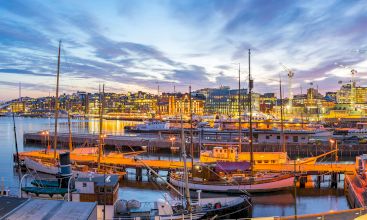
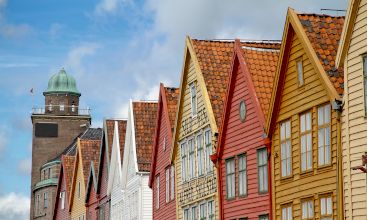
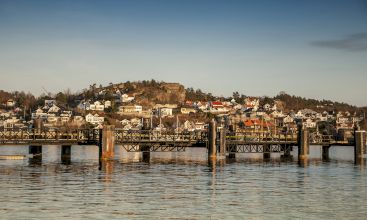
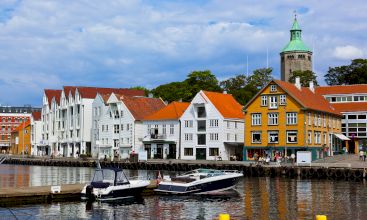
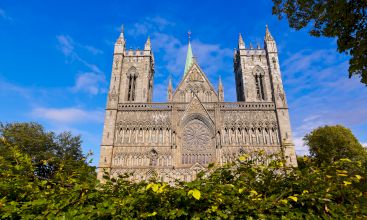
Popular rental locations in Norway
-
Car Hire Oslo AirportFrom
£ 17 /day -
Car Hire Bergen Flesland AirportFrom
£ 15 /day -
Car Hire Sandefjord AirportFrom
£ 17 /day -
Car Hire Stavanger Sola AirportFrom
£ 26 /day -
Car Hire Trondheim AirportFrom
£ 21 /day -
Car Hire Ålesund Vigra AirportFrom
£ 22 /day -
Car Hire Kristiansand AirportFrom
£ 22 /day -
Car Hire Alta AirportFrom
£ 28 /day
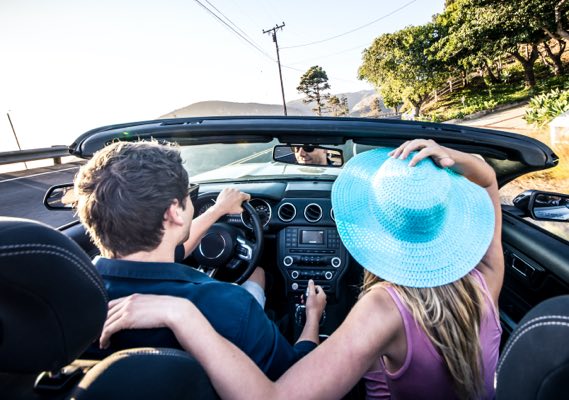
When to book a rental car in Norway
Norway - When is the most affordable time to rent a mini class car?
At this destination (Norway), April is the most affordable time to rent a mini class car with an average daily rate of
Norway - When is the most affordable time to rent a economy class car?
At this destination (Norway), April is the most affordable time to rent a economy class car with an average daily rate of
Norway - When is the most affordable time to rent a compact class car?
At this destination (Norway), April is the most affordable time to rent a compact class car with an average daily rate of
Norway - When is the most affordable time to rent an intermediate class car?
At this destination (Norway), October is the most affordable time to rent a intermediate class car with an average daily rate of
Norway - When is the most affordable time to rent a standard class car?
At this destination (Norway), April is the most affordable time to rent a standard class car with an average daily rate of
Norway - When is the most affordable time to rent a full-size car?
At this destination (Norway), April is the most affordable time to rent a full-size class car with an average daily rate of
Norway - When is the most affordable time to rent a luxury car?
At this destination (Norway), October is the most affordable time to rent a luxury class car with an average daily rate of
Norway - When is the most affordable time to rent a station wagon?
At this destination (Norway), April is the most affordable time to rent a station wagon with an average daily rate of
Norway - When is the most affordable time to rent a SUV?
At this destination (Norway), October is the most affordable time to rent an SUV with an average daily rate of
Norway - When is the most affordable time to rent a MPV?
At this destination (Norway), November is the most affordable time to rent an mpv with an average daily rate of
Norway - When is the most affordable time to rent a minivan?
At this destination (Norway), September is the most affordable time to rent a minibus with an average daily rate of
Norway - When is the most affordable time to rent a sports car?
At this destination (Norway), March is the most affordable time to rent a sports car with an average daily rate of
Norway - When is the most affordable time to rent a delivery van?
At this destination (Norway), December is the most affordable time to rent a van with an average daily rate of
Car rental locations in Norway
Carrentals.co.uk compares rental car prices at the following destinations
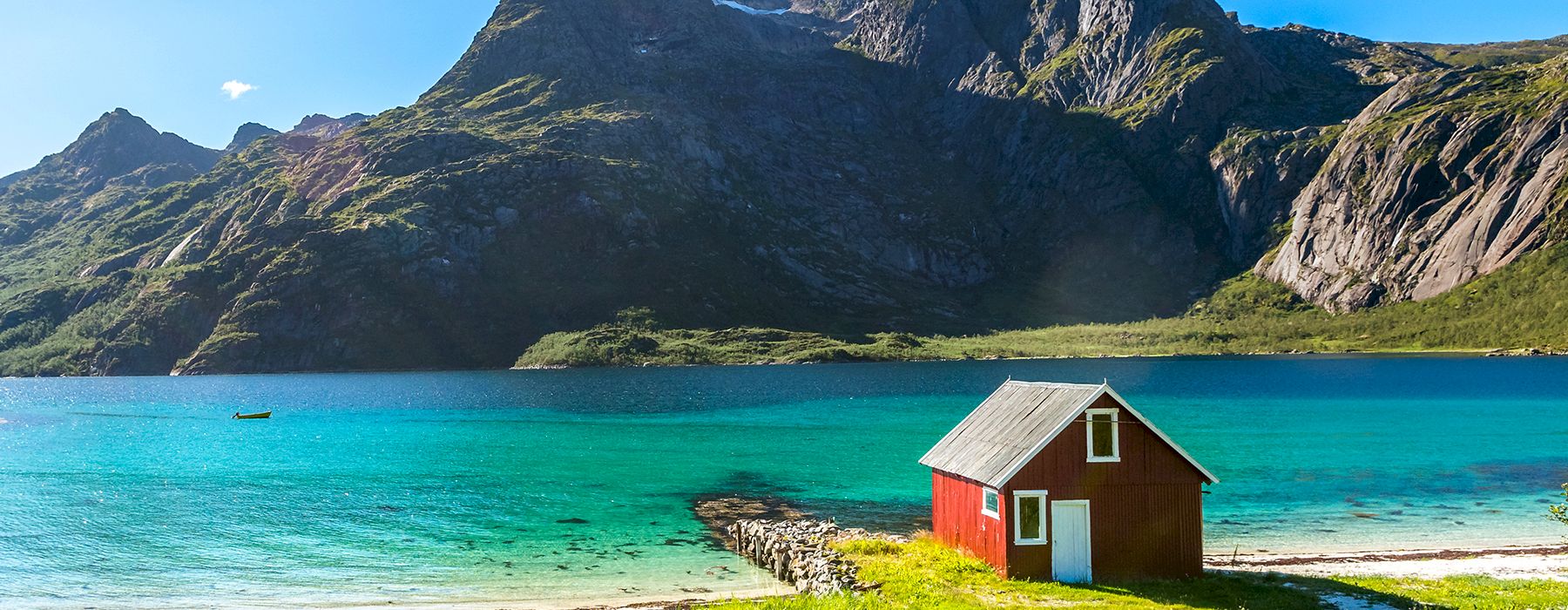
Norway Guide
Norway is best explored by rental car. Carrentals.co.uk has over 93 pick-up locations in Norway. This means there is always a pick-up location close to your destination.
Most popular car hire locations in Norway
Driving
Norway is an ideal place to head to enjoy outdoor activities. Hiking through one of the many stunning forests, hitting the slopes for a spot of skiing or just taking in the stunning scenery are all great ways to spend a holiday here. In order to experience all that the country has to offer, a self-drive holiday is the best option as it allows for complete independence and plenty of flexibility.
Driving Tips for Norway
Due to the sheer size of Norway, travelling by public transport can add a significant amount of time to journeys. The public transport network is significantly less developed than many tourists expect. Bus and train routes tend to link the major towns and cities only but for anyone intending to head to the more remote areas, a car is a must. The road system is extensive, well maintained and well signposted.
Driving licences: although it is possible to hire a vehicle using a valid UK driving licence, having an International Driving Licence can make the process easier.
Which side does Norway drive on: the right.
Speed limits:
Cities: 31mph (50kph)
Outside cities: 49mph (80kph)
Motorways: 62mph (100kph)
Alcohol limits: the limit is 0.02 per cent, considerably stricter than the UK limit of 0.08 per cent. Fines and prison sentences are commonly enforced for anyone found to be over the limit.
Driving age: 18 years although the minimum age to rent is 19 years.
Seatbelts: are provided in all rental vehicles and it is compulsory for all passengers to wear them, both in the front and rear of the car.
Mobile phones and GPS: it is against the law to use a mobile phone when driving unless using a hands-free device. GPS is legal and readily available, but the road network is extensively signposted.
Cost of fuel in Norway: slightly higher than the expected UK price.
Car hire and fuel payment: credit card is accepted as a method of payment at all car rental companies and the majority of petrol stations. However, having cash to hand can be useful just in case.
Insurance: third-party insurance is not always included, but is compulsory. Additional cover can be added and should be considered depending on circumstances. Always read the small print thoroughly.
Traffic and parking: many of the city centres have traffic congestion alongside strict parking laws which are clearly signed. Many parking spaces both in and out of the cities run on parking metres, with limits as to how long a vehicle can park at any one time.
Transport
Trains
International trains arrive from Sweden regularly. Domestic trains are run by Norwegian State Railways (NSB). The railway is by no means extensive and only connects Oslo with a handful of other major cities. Services run several times a day and the major routes are Oslo to Stavanger, via Kristiandand, and Oslo to Halden, via Sarpsborg. The trains are well maintained, with either air-conditioning or heating when appropriate. One-way tickets cost around £18 but a Norwegian Rail Pass is a good way to hop on and hop off at a discount. Reservations can be made online from inside Norway or over the phone from outside the country for an additional charge of under £5.
Taxis
Taxis tend to be expensive, even for short journeys. Buses, trains and sometimes trams are readily available in many cities and are usually cheaper options. Those who want to use taxis should ensure they use licensed taxis, which have a white ‘Taxi’ sign placed on the roof of the vehicle. Fares start at around £5 and increase with each kilometre.
Buses
International services from Sweden and Denmark are regular. The bus network in Norway is far more extensive than the train network, and bus routes connect all of the cities along with a number of national parka. There are three main operators in the country, NOR-WAY Bussekspress, TIMEkspressen and Boreal Transport Norge. Prices vary. A return ticket from Oslo to Stavanger costs between £18 and £30, although online deals can be found. The buses are clean and many have free Wi-Fi and complimentary tea and coffee. Seating is often limited, so it is vital to book in advance.
Ferries
Belgium, Germany, Denmark and the UK all have ferry links with Norway, with operators including DFDS Seaways, Color Line and Stena Line. Car ferries are plentiful in the coastal regions, making it easy to get around when hiring a vehicle. Prices vary depending on the length of journey but there are often a number of services each day, as often as every half an hour. Reservations are not necessary. Timetables are posted online and can change depending on the weather conditions.
Airports
Oslo Airport, Gardermoen, around 37 miles (60kms) from the capital, is the main gateway. It has direct connections with the UK. Domestic flights are extremely popular, mostly due to the slow train and bus service. SAS and Norwegian run the most domestic services and serve secondary airports at Sandefjord, Moss and Stavanger, among other locations. Northern Norway has the most domestic flights due to the towns and cities being spaced so far apart. Planes tend to be small and routes often have stops along the way. Seating is limited so flights should be booked well in advance. Northern flights tend to be expensive, with a flight from Alta to Tromso costing around £110. In contrast, a flight from Oslo to Molde costs around £70.
Explore
Exploring Norway
There are numerous amazing cities to be explored in Norway. Oslo, the capital, is a must-visit. With plentiful museums and stunning architecture, there is a lot to see by day. However, in the evening, there is a huge amount of nightlife, with bas and clubs galore to keep even the most ardent night owls entertained.
Bergen, previously the capital, manages to hold its own with its old Hanseatic trading centre and numerous traditional wooden buildings. The second largest city is set against a magnificent mountain background and is the perfect gateway to the renowned western fjords.
Tromso is renowned as the best place in the country to see the famous Northern Lights. It’s best to head here during the summer for the best chance of catching the lights. Outside of the cities, Norway really comes into its own. With so many national parks, tourists are spoilt for choice, but the mighty Sognefjorden is a must-see. Covering a massive section of land, it encompasses two UNESCO World Heritage sites, Flåm and Nærøyfjorden, along with numerous other picturesque towns and striking glaciers.
Our Travel Editor’s Recommended Drives
Gudbrandsdalen to Romsdalen – heading along the E6, drivers can enjoy the views of the Gudbtandsdalen Valley, with the chance to stop at Dombas village. The road also leads past the largest rock face in Europe and numerous alpine summits.
Utvikfjellet to Stryn – this is the best route for tourists wanting to see some of Norway’s most famous fjords. Olden is a particular highlight, with some of the most striking glaciers in the country.
Oslo to Geilo village– leading through the Hallingdal Valley and ending in a tiny, quaint mountain village, this peaceful drive through the most popular area for outdoor activities, particularly hiking, is well worth the journey.
Holidays and Festivals
New Year’s Day (1 January)
Maundy Thursday (Holy Thursday, before Easter)
Easter (March/April)
Labour Day (1 May)
Constitution Day (17 May)
Christmas Day (25 December)
Weather
Temperatures fluctuate massively in Norway. During the summer, they can peak at around 30ºC and plummet as low as -25ºC in the winter. The north sees the majority of this cold weather, along with most of the snowfall. Winters tend to be dark. The ideal time to visit is between May and September. The beginning of May has warm temperatures but plenty of snow for those wanting to ski.
Practical Stuff
Norway Travel Tips
There is an endless amount of outdoor activities to be enjoyed in Norway as well as the Northern Lights in the north of the country. Snowmobile safaris and dog-sledding are popular activities. Driving around the country is the easiest way to enjoy all that is on offer and following these travel tips can make a holiday run smoothly.
Norway contact numbers
Country code - (+47)
Police – 112 or 02800
Fire - 110
Medical - 113
Tourist Office - +47 2414 4600
British Embassy – +47 2313 2700
United States Embassy – +47 2130 8540
Canadian Embassy – +47 2299 5300
Irish Embassy – +47 220 17200 Norway Embassy – +47 6758 4848
Money matters
Norway is not the cheapest country in terms of expenses and accommodation, so travellers should bring a decent budget with them. A service charge is usually added to the bill automatically, although upmarket restaurants might expect an extra tip for service. The currency of Norway is the krone. Other currencies can be exchanged at post offices or banks. All ATMs accept foreign cards and signing is no longer accepted in many establishments, only chip and PIN.
Health and safety
There are no necessary vaccinations needed for visiting Norway. Norway is a safe country to travel in, with only the usual tourist crimes such as pick pocketing presenting safety issues. Always keep valuables at your hotel or on you. Due to the extreme weather conditions, tourists should heed any warnings about heavy snowfall or glaciers. This is particularly true when mapping out a hiking trail. Those driving during the winter should pack plenty of supplies and warm clothing, along with extra fuel.
Fitting in…
On the whole, Norwegians are pretty informal, greet each other by first name and always remove their shoes when entering someone’s home. They tend to be good at timekeeping and a lack of punctuality is considered impolite. Learning a few local phrases and being polite will get tourists on the right side of the locals.
Visas for Norway
As Norway honour the Schengen Agreement, citizens from countries which are also party to the agreement do not require a visa. British passport holders do not need to obtain a visa to enter Norway, while American and Canadian nationals can stay without a visa for up to three months. Citizens of other countries should consult their local Norwegian embassy for further visa information.
Electricity
Norway uses electricity at 220 Volts, 50 Hertz. Plugs with two round prongs are used. Anyone wishing to use UK or American electrical appliances will need to purchase an adaptor.
Business hours
Businesses: 09:00 to 17:00, Monday to Friday
Shops: 09:00 to 17:00 Monday to Friday, 09:00 to 15:00, Saturday
Government offices: 09:00 to 17:00, Monday to Friday
Museums: 10:00 to 16:00, Tuesday to Sunday
Helpful phrases
Goddag – Hello
Hvor er du vra? – Where are you from?
Hvordan har du det? - How are you?
Hver koster denne? – How much is this?
Jeg skjonner ikke – I don’t understand
Practical information
-
CurrencyNorwegian krone
-
Driving directionRight
-
City speed limit50 km/h
-
Freeway speed limit80 km/h
-
LanguageNorwegian, Norwegian Bokmål, Norwegian Nynorsk
-
Popular car categoryCompact
What most people want to know
The following questions and answers are a selection of the most popular questions. If you do not find the answer to your question, have a look at the Frequently Asked Questions page or contact us.
- Budget
- Hertz
- Avis
- Enterprise
- Alamo
- Sixt
- Thrifty
- Europcar
- Keddy By Europcar
- Dollar Rent a Car
- National Car Rental
- Rent a star
- Your Rent
- McRent
- Touring Cars